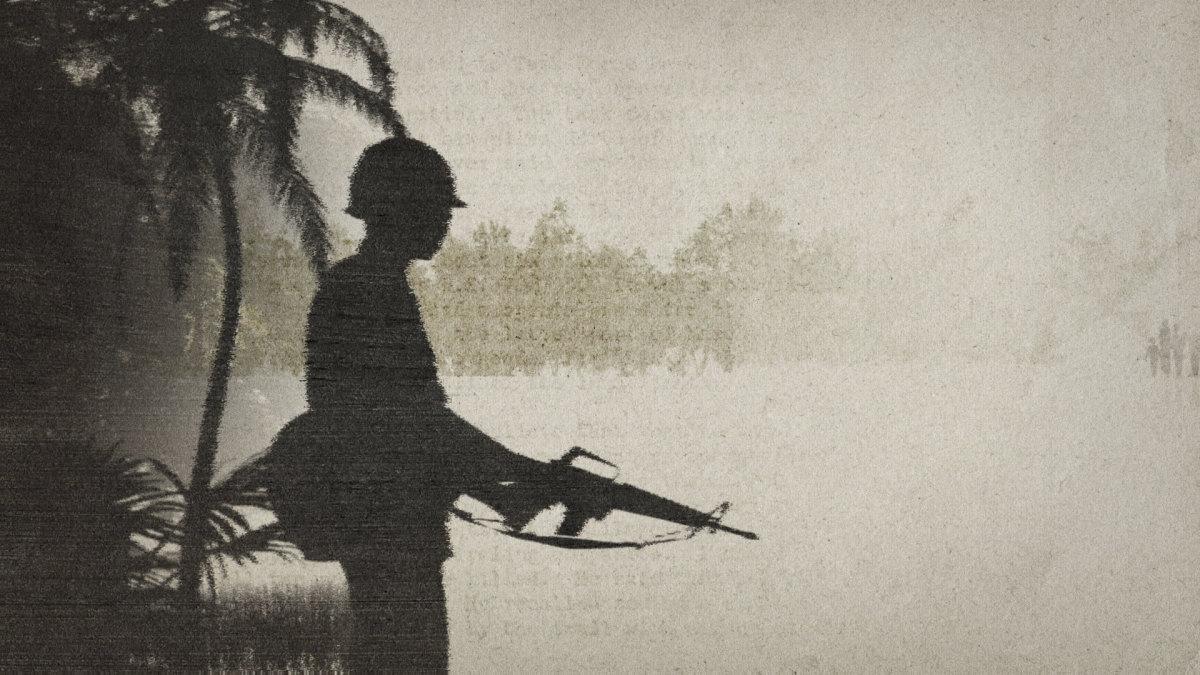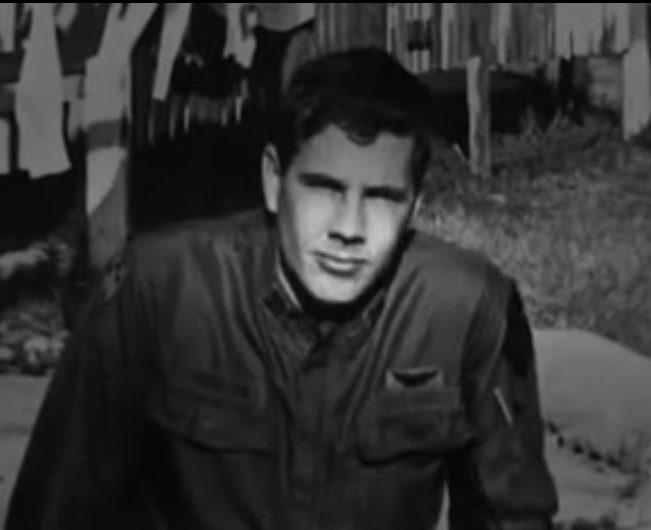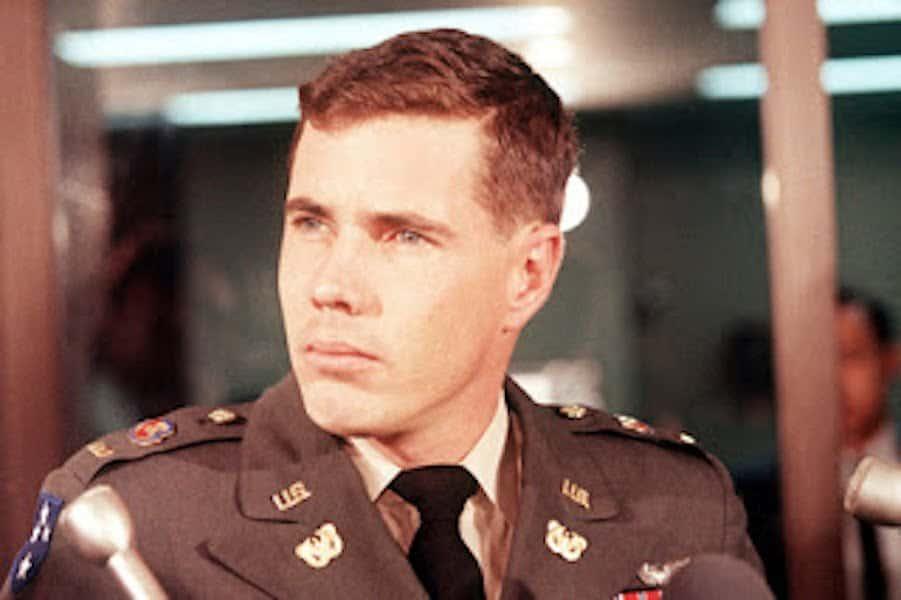Book Review for the Forgotten Hero of My Lai
Hugh Thompson was a United States Army Major and a former warrant officer in the 123rd Aviation Battalion of the 23rd Infantry Partitioning who helped end the My Lai Massacre of the South Vietnamese village known every bit Sơn Mỹ on March 16, 1968. In harsh times, heroes are ordinary men doing extraordinary things. To do something like that in the whirlwind of war was downright insane, and that'south exactly what he did.
Introduction
My Lai massacre was a bloody stain of the Vietnam State of war, only one homo inverse the course of the boxing and went from traitor to hero. Having redeemed himself for other people'southward mistakes, his heroic act was written in US War machine history.
The daring act of a man in disobedience of gainsay differences in saving unarmed civilians from being deliberately butchered past his own side while under combat orders. Hugh Thompson'due south defiance and courage with that of his crew had given a new lease of life to others that they saved and will be remembered past all in the face of Humanity and History.

Early life
Hugh Clowers Thompson Jr. was built-in on April 15, 1943, in Atlanta, Georgia, United States, to Wessie and Hugh Clowers Thompson. Hugh Clowers Thompson Sr. was an electrician who served in the United states of america Navy during World War II. Thompson's male parent played a central role in his children'southward education. He educated his children to act with discipline and integrity.

Hugh Thompson Jr. graduated from Stone Mount High School on June 5, 1961. Following graduation, he enlisted in the United States Navy and served in a naval mobile construction battalion at Naval Air Station Atlanta, Georgia, as a heavy equipment operator. In 1964, Thompson received an honorable belch from the Navy and returned to Stone Mountain to alive a quiet life and heighten a family with his wife. He studied mortuary science and became a licensed funeral director.
Thompson felt obliged to render to military service when the Vietnam War began. In 1966, Thompson enlisted in the United States Ground forces and completed the Warrant Officeholder Flight Program preparation at Fort Wolters, Texas, and Fort Rucker, Alabama.In late December 1967, at the age of 25, Hugh Thompson was ordered to Vietnam and assigned to Company B, 123rd Aviation Battalion of the 23rd Infantry Division.
My Lai Massacre
Hugh Thompson Jr. was a twenty-five-yr-old helicopter pilot and Army warrants officer. On March 16, 1968, he was flight a mission in Vietnam and came across a large number of dead civilian bodies; and in pursuing surveillance, he discovered that those civilians had been killed, and the survivors were even so nether fire, by American forces.
Company C (Charlie Company), 1st Battalion, 20th Infantry Regiment of Task Force Barker, led by Captain Ernest Medina, moved into Sơn Mỹ. Upon entering Sơn Mỹ, officers and soldiers of Company C moved through the Song My Village and vicinity, murdering civilians, raping women, and setting fire to huts. 1st Platoon of Company C, commanded by Lieutenant William Laws Calley Jr., forced approximately 70–80 villagers, generally women and children, into an irrigation ditch and murdered the civilians with knives, bayonets, grenades, and minor arms burn.
Upon seeing that, Hugh Thompson landed the helicopter, approached Calley, and talked to him. In front of Lt. Calley, Hugh Thompson was outranked. He ranked higher than a warrant officer. Calley told Thompson that he was following orders, presumably from Capt. Medina and maybe college.
Thompson was more experienced than Lt. Calley, more than ethical, more than talented, and brighter, and probably recognized Calley didn't know what he was doing. He tried to persuade him to end the attack but with no success. Some of Calley'southward men didn't follow Calley'southward orders and did cipher. So, he decided to do something.
Hugh Thompson and his coiffure rescued a surviving child whom they flew to the nearest field infirmary. They likewise led as many surviving civilians as they could to shelter. They landed their helicopter between the American forces and the civilians, and they trained their guns on the advancing Americans. They also reported the massacre to higher officers, who ordered the troops on the ground to cease.
When it was all over, hundreds of unarmed civilians had been murdered by American forces. Nonetheless, Thompson had saved civilians who would have been killed if he had not intervened.
Hugh Thompson'due south actions may be unique. Where else in history has a massacre of civilians been stopped in the centre of the massacre? Thompson risked his life and career and had Lt. Calley shoot him. There was no time to get an ethics stance or consult authorities. Thompson acted more instinctively, given his morals, character, and armed forces training.
Aftermath
The Ground forces covered it up, but the facts eventually came to light and the responsible officer, Capt. Ernest Medina and Lt. William Calley were court-martialed. Calley was convicted, and Medina was acquitted. Thompson continued to wing and was striking eight times, in 4 of which incidents the aircraft was lost.
In the last incident, his helicopter was brought down by enemy machine-gun burn down, and he broke his dorsum in the resulting crash landing. This concluded his combat career in Vietnam. He was evacuated to a hospital in Japan and began a long rehabilitation period.

Thompson was later promoted to Major, but Thompson was a Warrant Officer in his heroic acts. Upon coming dwelling house, he got death threats and the similar. Some people publicly stated that they felt Thompson was the only soldier at My Lai who should be punished (for turning his weapons on beau American troops) and wanted to see him court-martialed for his actions at My Lai.
Awards and recognition
In 1998, 30 years after the massacre, Hugh Thompson and the ii other crew members, Andreotta and Colburn, were awarded the Soldier'southward Medal (Andreotta posthumously), the United States Army's highest award for bravery not involving direct contact with the enemy. They were finally recognized for the heroic act they did. They were true American heroes.
Thompson and Colburn returned to Sơn Mỹ to run across with survivors of the massacre at the Sơn Mỹ Memorial in 1998. In 1999, Thompson and Colburn received the Peace Abbey Courage of Conscience Award.
Death
At the age of 62, subsequently all-encompassing cancer handling, Thompson was removed from life support and died on January 6, 2006, at the Veterans Affairs Medical Heart in Pineville, Louisiana. Colburn came from Atlanta to exist at his bedside. Thompson was buried in Lafayette, Louisiana, with total armed forces honors, including a three-volley salute and a helicopter flyover.
On February 8, Congressman Charles Boustany (R-La.) made a statement in Congress honoring Thompson, stating that the "United states of america has lost a true hero, and the Land of Louisiana has lost a devoted leader and dear friend.
Source: https://special-ops.org/hugh-thompson-the-forgotten-hero-of-my-lai/
0 Response to "Book Review for the Forgotten Hero of My Lai"
Mag-post ng isang Komento